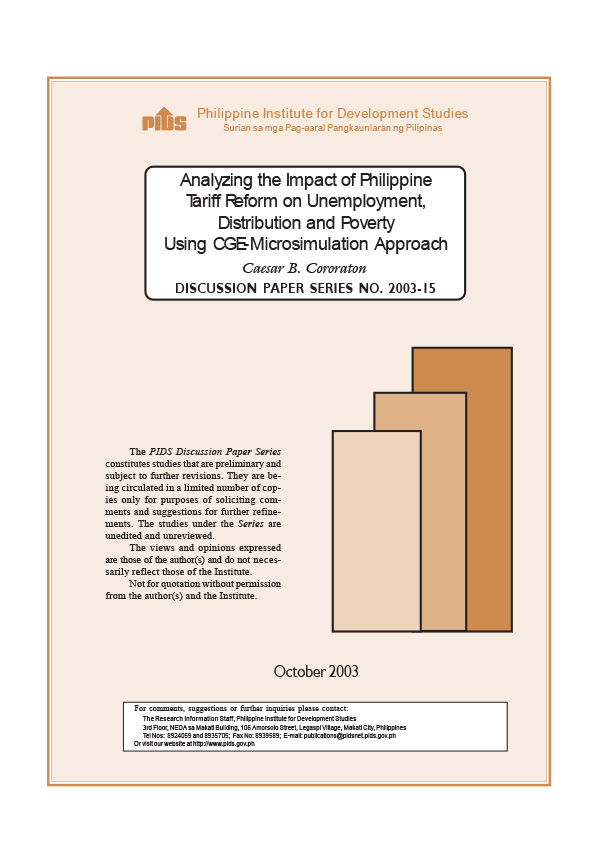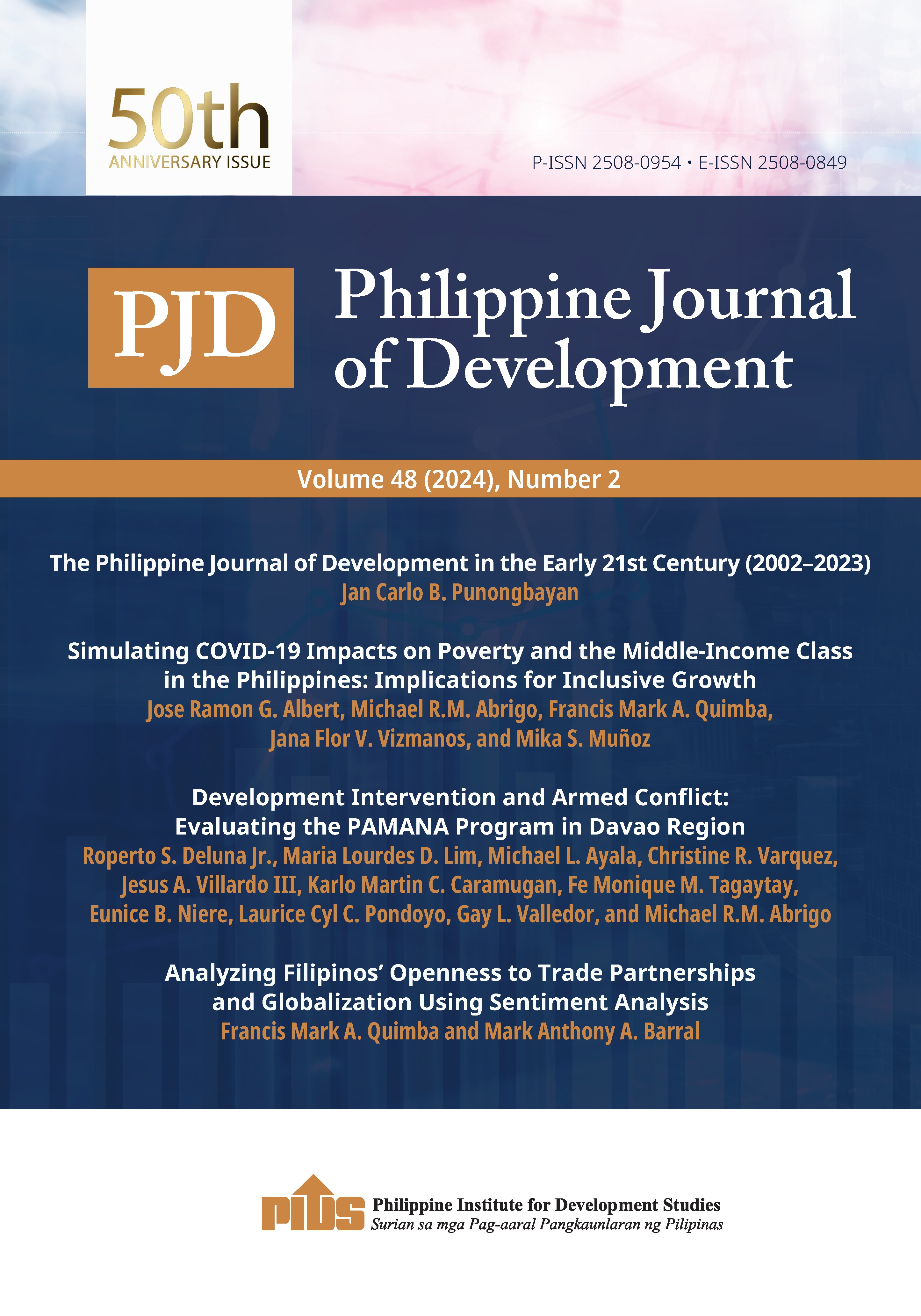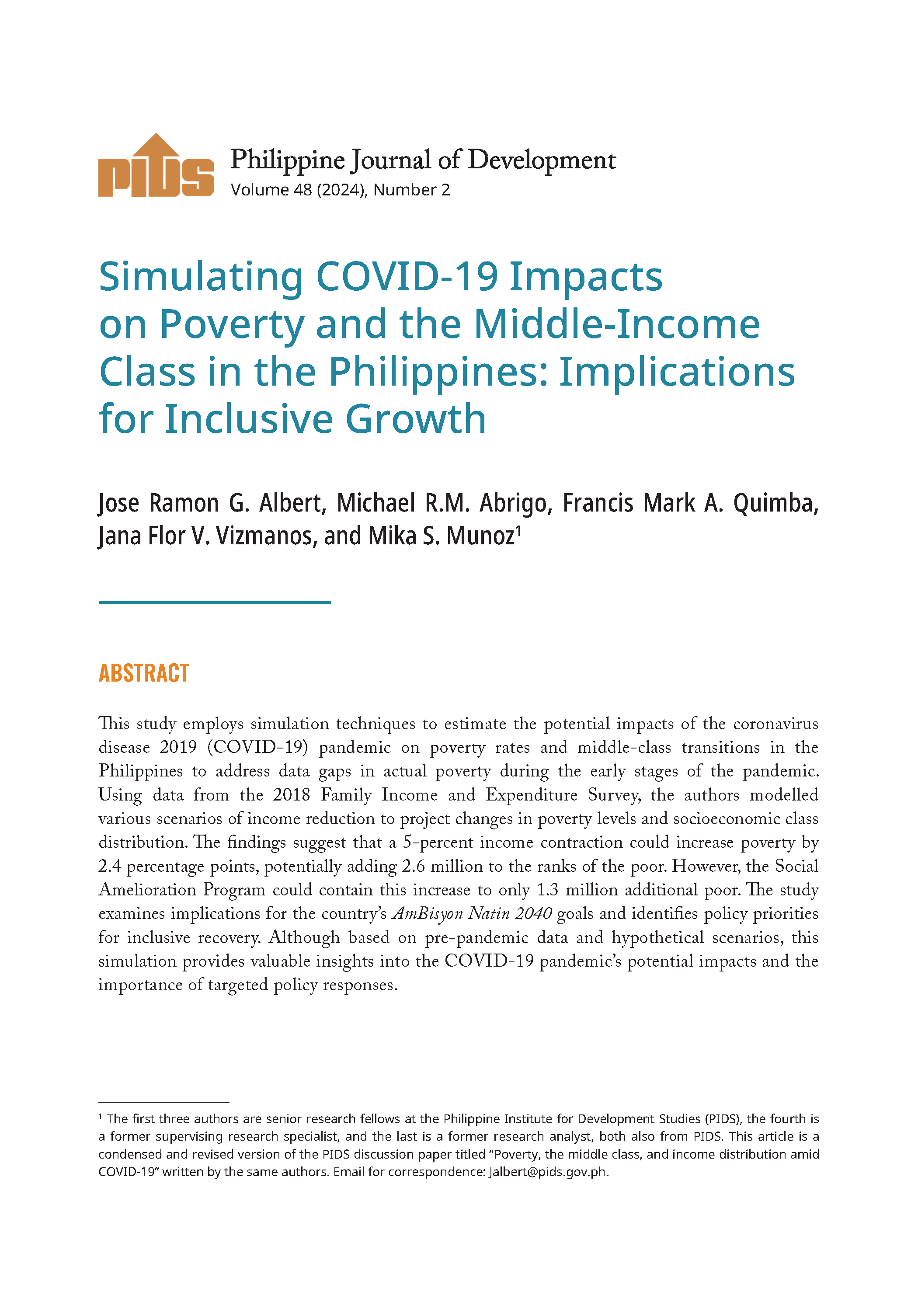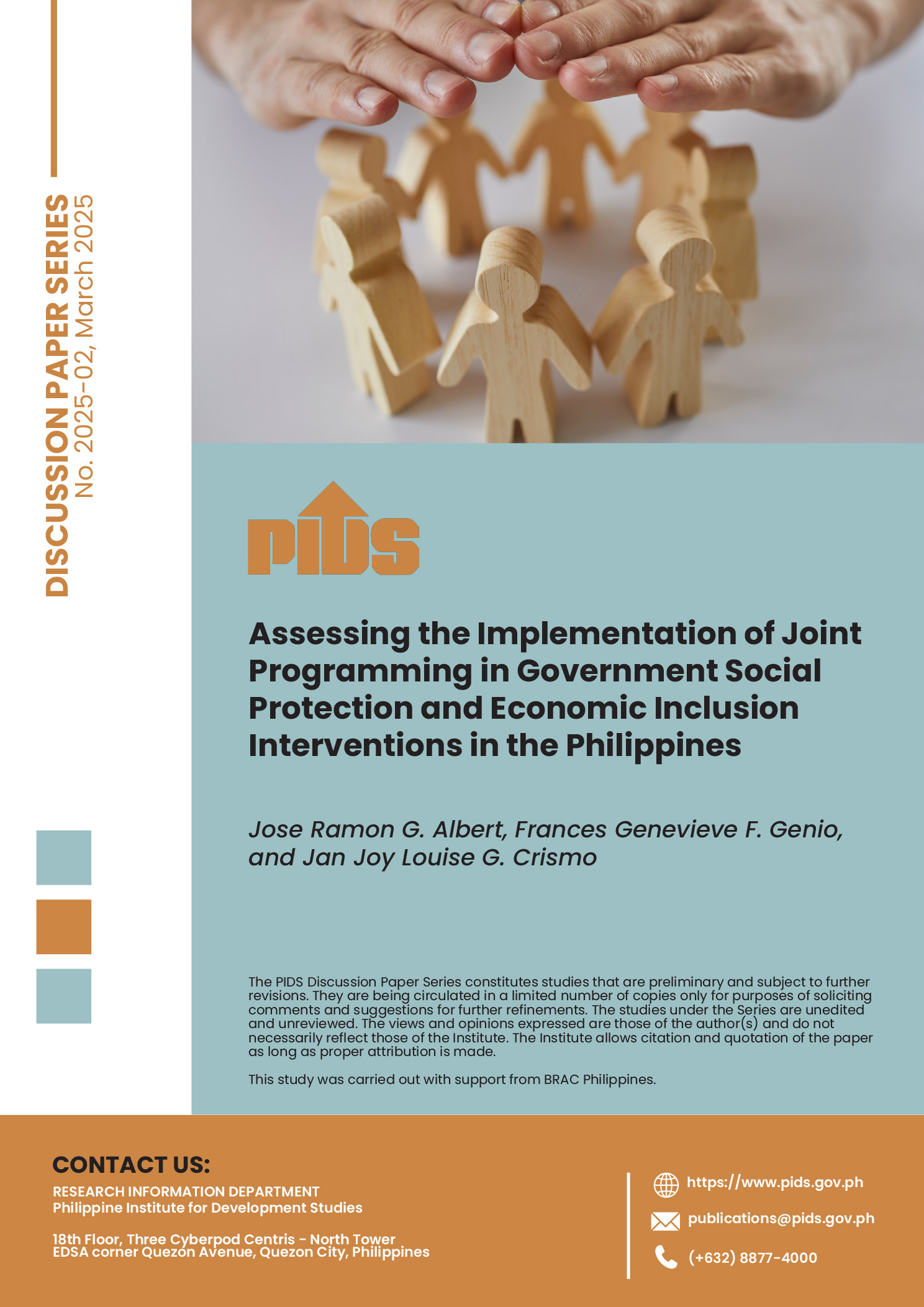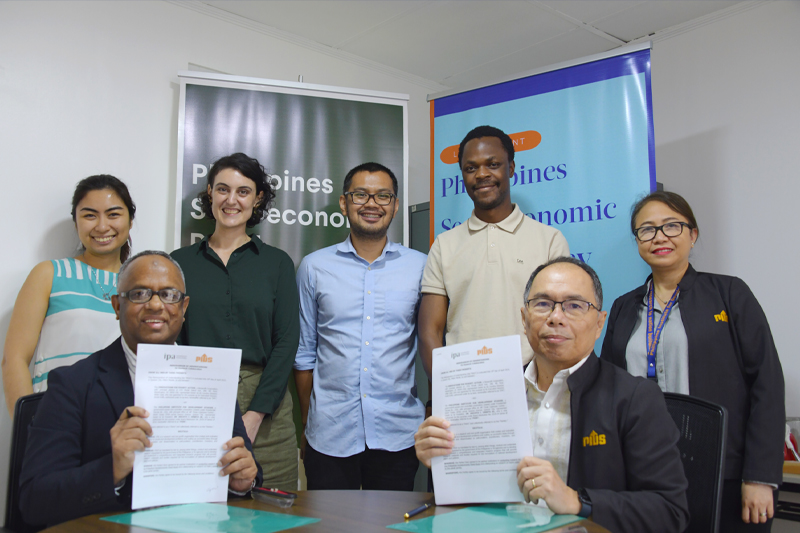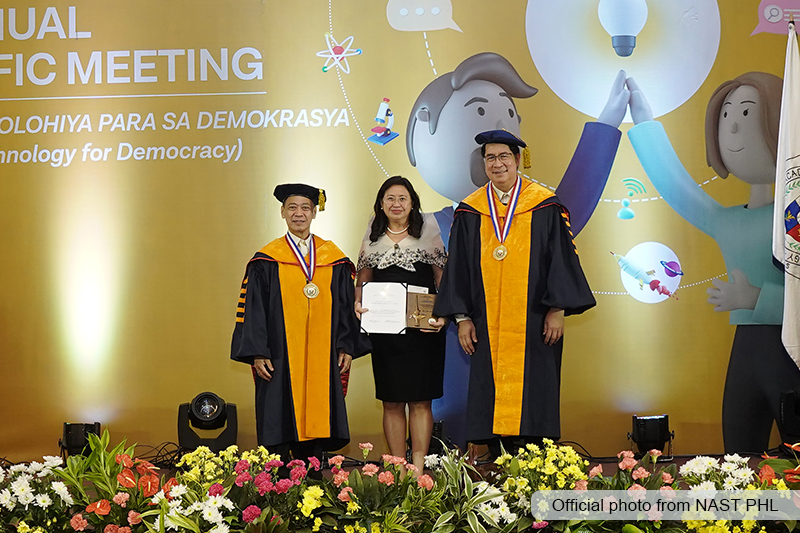This paper examines the effects of the reduction in tariff rates in the Philippines from 1994 to 2000 on unemployment, distribution and poverty using a CGE-microsimulation approach wherein the representative household assumption in the traditional CGE modeling is replaced with individual households. The approach allows one to model the link between trade reforms and individual household responses, and their feedback to the general equilibrium of the economy. The present paper incorporates the entire 24,797 households of the 1994 Family Income and Expenditure Survey.
Citations
This publication has been cited 4 times
- Feltenstein, Andrew et. al. 2013. “The impact of micro-simulation and CGE modeling on tax reform and tax advice in developing countries”: A survey of alternative approaches and an application to Pakistan. International Center for Public Policy Working Paper Series, at AYSPS, GSU paper1309. International Center for Public Policy, Andrew Young School of Policy Studies, Georgia State University.
- Khan, Haider A.. 2007. Social accounting matrices (SAMs) and CGE modeling using macroeconomic computable general equilibrium models for assessing poverty impact of structural adjustment policies. CIRJE F-Series CIRJE-F-463. CIRJE Faculty of Economics, University of Tokyo.
- Khan, Haider A.. 2007. Trade liberalization and poverty reduction in general equilibrium: The role of labor market structure. CIRJE F-Series CIRJE-F-462. CIRJE, Faculty of Economics, University of Tokyo.
- Rutherford, Thomas, David Tarr, and Oleksandr Shepotylo. 2005. Poverty effects of Russia's WTO accession: Modeling "real" households and endogenous productivity effects. Policy Research Working Paper Series 3473. The World Bank.

